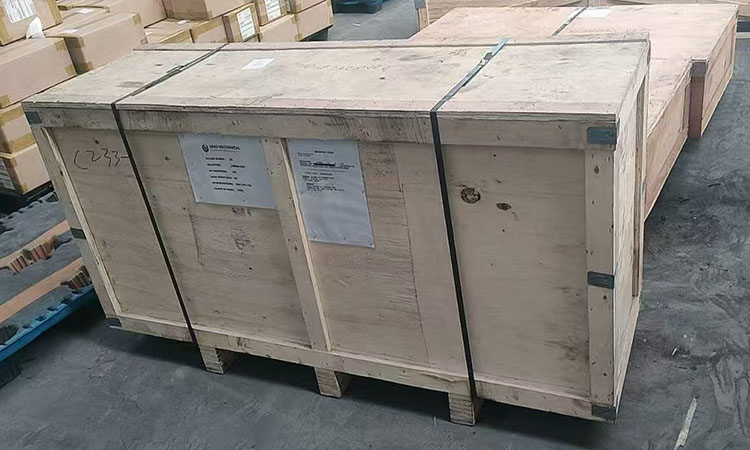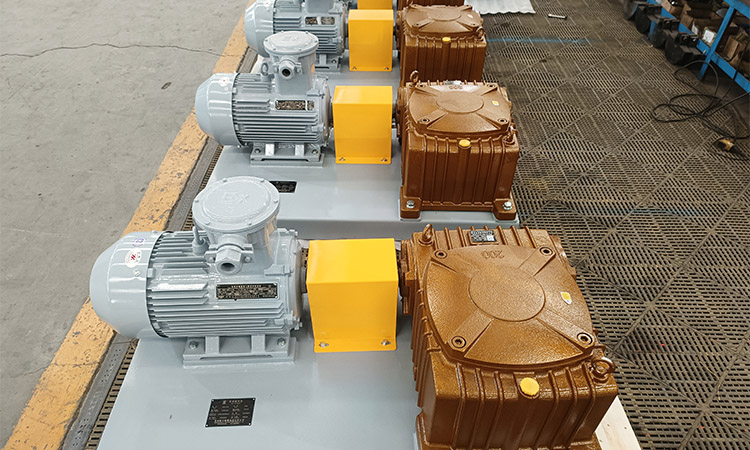Sino Mechanical Equipment completed the production of sand pumps for Middle East customer


Features of Sino Mechanical Equipment Sand Pump
Sand pump is a key equipment in the drilling fluid solid control system. It is mainly used to remove solid particles such as drill cuttings and sand in the drilling fluid to ensure the cleanliness and performance of the drilling fluid. The characteristics of Sino Mechanical Equipment sand pump are as follows:
1. Strong wear resistance
Material selection: Sand pump flow parts (such as impellers and pump casings) usually use high chromium alloys, rubber linings or polyurethane and other wear-resistant materials to resist the erosion and corrosion of high-speed sand particles.
Design optimization: The flow channel design reduces turbulence, reduces wear and extends service life.
2. High head and large flow
It needs to adapt to the high density and high viscosity of the drilling fluid, and have a high head (pressure) and flow to ensure efficient transportation of solid-containing liquids.
It is usually used in conjunction with cyclones (such as desanders and desilters) to form a solid control system.
3. Corrosion resistance
Drilling fluid may contain salt, acid or alkaline substances. Sand pumps need to use anti-corrosion coatings (such as nickel-based alloys, fluororubber) or corrosion-resistant materials (such as 316 stainless steel) to deal with chemical corrosion.
4. Reliable sealing
Mechanical seal: Double-end mechanical seal or bellows seal is used to prevent drilling fluid leakage and external contaminants from entering.
Auxiliary flushing system: Some sand pumps are equipped with flushing fluid devices to further protect the seals.
5. Compact structure and convenient maintenance
The modular design facilitates the removal and replacement of wearing parts (such as impellers and liners).
Some models use quick-opening pump casings to reduce downtime maintenance time.
6. Adapt to harsh working conditions
Can withstand complex environments such as high temperature, high pressure, and vibration at the drilling site.
Some sand pumps are designed as variable frequency drives to adapt to flow fluctuation requirements.
7. Efficient separation capacity
When used with a cyclone, it is necessary to maintain stable pressure and flow to ensure effective separation of solid particles and reduce drilling fluid waste.
8. Flexible power matching
It can be driven by motor, diesel engine or hydraulic drive to adapt to the power configuration of different drilling platforms.

What is a sand pump?
1. The role of a sand pump
Solid phase separation: Used in conjunction with equipment such as vibrating screens, cyclones, centrifuges, etc. to separate and discharge harmful solid phases (such as drill cuttings and sand particles) in drilling fluid.
Circulation power: Provide power for the drilling fluid circulation system to ensure that the separated drilling fluid can return to the wellbore.
Protect equipment: Reduce the wear of solid phase on downstream equipment (such as mud pumps and drill bits) and extend service life.
2. Core structure and working principle
Structural composition:
Impeller: core component, the material must be wear-resistant (such as high chromium alloy, rubber lining).
Pump casing: withstands high pressure and wear, usually designed with replaceable liner.
Sealing system: prevent drilling fluid leakage (commonly used mechanical seals or packing seals).
Drive device: driven by motor or diesel engine, the power is selected according to the displacement and head requirements.
Working principle: After the drilling fluid enters the pump body, the impeller rotates to generate centrifugal force, the solid particles are thrown to the pump wall and discharged from the discharge port with the high-speed fluid, and the clean liquid flows back through the low-pressure area.
3. Performance parameters of sand pump
Flow rate (displacement): usually 50~500 m³/h, which needs to match the drilling fluid circulation requirements.
Lift (pressure): affects the conveying distance and solid phase separation efficiency, commonly 20~100m.
Wear resistance: The material of the impeller and pump casing directly affects the life (such as ceramic coated impellers are suitable for high wear environments).
Corrosion resistance: to deal with chemical additives in drilling fluid (such as H₂S, salt).
4. Maintenance of sand pump
Regularly check the wear of the impeller and seals.
Avoid dry operation to prevent overheating of the pump body.
Flush the residual sand in the pump during shutdown to prevent scaling.
5. Troubleshooting of sand pump
Insufficient flow: may be caused by impeller wear or pipeline blockage, and parts need to be replaced or cleaned.
High vibration/noise: check bearing wear or rotor dynamic balance.
Leakage: adjust or replace mechanical seal.
6. Typical application scenarios of sand pump
Drilling fluid purification: remove drill cuttings and sand particles, maintain drilling fluid density and lubricity, and form a closed-loop system with desanders, desilters, etc. to achieve drilling fluid regeneration. It is required for both onshore and offshore drilling, especially in deep wells and horizontal wells. It is used to transport fracturing sand and fluid mixtures in shale gas mining.
Mud circulation system: used as a centrifugal pump to transport high-solid fluid.
Shale gas/deep well drilling: cope with highly abrasive and high-pressure environments.
7. How to choose a sand pump
Drilling fluid properties (density, viscosity, solid content), select the pump type according to the concentration and particle size of solid particles in the drilling fluid.
Working condition requirements (flow, pressure, temperature range). Match the pressure required by the cyclone (usually 0.2~0.4MPa).
Environmental requirements (explosion-proof, anti-corrosion, energy-saving).
Material compatibility: Consider the chemical properties of the drilling fluid (such as H₂S, brine).
Sand pump supplier
The performance of the oil drilling sand pump directly affects the efficiency of the solid control system and the drilling cost, so the design, material selection and operation and maintenance must strictly match the drilling conditions.


